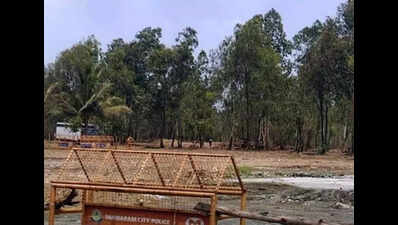Green cover loss sparks case against TN police station – The Times of India

Chennai: A dispute erupted over the construction of a new police station in Vengadamangalam, located in Chengalpet district, on land where more than 10,000 saplings were recently planted as part of a govt-supported green initiative. A case was filed before the green tribunal alleging that the proposed construction violates environmental norms and threatens to destroy a critical green space cultivated to enhance biodiversity and improve local environmental conditions.
The complaint, filed by K Hariharan, highlights that the land identified for the police station falls under Survey Numbers 15, 16/2, and 22. According to the complaint, the land was developed into a social forest, with the planting of a variety of trees including neem, banyan, fig, sandalwood, and teak. Additionally, a range of native plants such as henna, wild lemon, asparagus, and others were nurtured in the area. Hariharan alleged that several of these trees and plants were already cut down without obtaining proper clearances from the competent authorities, raising concerns over the violation of statutory procedures.
Supporting the complaint, block development officer (BDO) of Kattankolathur Panchayat Union, A Sasikala, addressed a letter to the local panchayat president. In the letter, the BDO stated that permission for any construction activity must only be granted after confirming whether a proper resolution was passed, whether necessary approvals from district-level authorities were obtained, and whether prior permission was secured for cutting the trees. The BDO further flagged the environmental risks involved, cautioning that the destruction of the green cover could increase the risk of flooding during the rainy season, especially as a rainwater canal connecting Ponmar, Kandigai, Madurapakkam, and Agaramthen Lake runs nearby.
In his additional affidavit submitted to the tribunal, Hariharan emphasized the extent of the biodiversity loss and pressed for consideration of alternative vacant lands available in the vicinity, instead of proceeding with construction on the sapling-covered land.
















